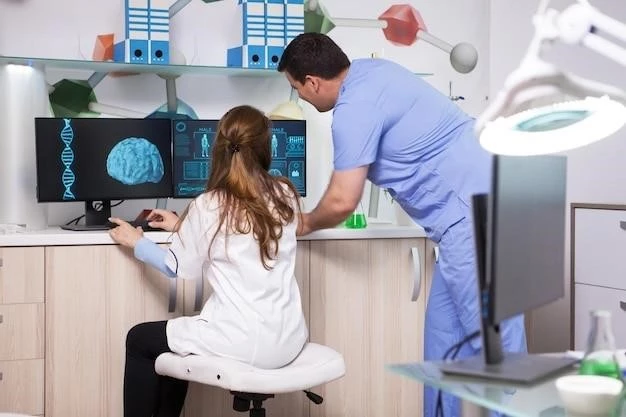Causes of Cerebral Aneurysms
Genetic Factors
Genetic predisposition plays a role in the development of cerebral aneurysms. Family history and inherited conditions such as polycystic kidney disease can increase the risk of aneurysm formation. Understanding genetic factors is crucial for early detection and preventive measures.
Hypertension and Cardiovascular Disease
Hypertension and cardiovascular issues can weaken blood vessels in the brain, increasing the risk of cerebral aneurysms. Proper management of blood pressure and heart health is essential to prevent the development and progression of these dangerous conditions.
Smoking and Substance Abuse
Smoking and substance abuse can contribute to the development of cerebral aneurysms by damaging blood vessels and increasing blood pressure. Quitting smoking and avoiding harmful substances are crucial steps in reducing the risk of aneurysm formation.
Symptoms and Signs of Cerebral Aneurysms
Sudden Severe Headaches
One of the key symptoms of a cerebral aneurysm is a sudden, severe headache often described as the ″worst headache of your life.″ If you experience such a headache, seek medical attention immediately as it could indicate a ruptured aneurysm.
Vision Changes and Numbness
Vision changes, such as double vision or blurred vision, along with numbness or weakness on one side of the face or body, can be signs of a cerebral aneurysm. These neurological symptoms require immediate medical evaluation to assess the risk of an aneurysm rupture.
Diagnosis and Imaging Techniques for Cerebral Aneurysms
CT Scans and MRIs
Computed Tomography (CT) scans and Magnetic Resonance Imaging (MRI) are commonly used to detect and visualize cerebral aneurysms. These imaging techniques help physicians evaluate the size, location, and shape of an aneurysm to determine the most appropriate treatment plan.
Cerebral Angiography
Cerebral Angiography is a specialized imaging technique that involves injecting contrast dye into blood vessels to visualize the arteries in the brain. This procedure provides detailed information about the location and size of a cerebral aneurysm, guiding treatment decisions for optimal patient outcomes.
Treatment Options for Cerebral Aneurysms
Surgical Clipping
Surgical clipping is a procedure to treat cerebral aneurysms by placing a small metal clip at the base of the aneurysm to prevent blood flow into it. This technique aims to reduce the risk of rupture and potential complications associated with aneurysms.
Endovascular Coiling
Endovascular coiling is a minimally invasive technique used to treat cerebral aneurysms by inserting soft coils into the aneurysm sac. This procedure promotes blood clotting inside the aneurysm, decreasing the risk of rupture and providing a less invasive alternative to surgical clipping.

Recovery and Rehabilitation after Cerebral Aneurysm Surgery
Physical Therapy
Physical therapy plays a crucial role in the recovery process after cerebral aneurysm surgery. It focuses on restoring strength, mobility, and coordination, helping patients regain function and independence post-surgery.
Cognitive Rehabilitation
Cognitive rehabilitation is essential for patients recovering from cerebral aneurysm surgery to address memory, attention, and problem-solving deficits. This structured program aims to improve cognitive function and enhance overall quality of life post-surgery.
Lifestyle Changes to Prevent Cerebral Aneurysm Rupture
Blood Pressure Management
Effective blood pressure management is crucial in preventing cerebral aneurysm rupture. Healthy lifestyle choices, stress reduction, and prescribed medications can help control blood pressure levels, reducing the risk of aneurysm formation and rupture.
Healthy Diet and Exercise
Adopting a healthy diet rich in fruits, vegetables, and whole grains, coupled with regular exercise, can contribute to overall cardiovascular health and reduce the risk of cerebral aneurysm development and rupture. Maintaining a healthy lifestyle is key to preventing aneurysms.
Research Advances in Cerebral Aneurysm Treatment
New Treatment Modalities
Ongoing research is exploring innovative treatment modalities for cerebral aneurysms, such as flow diversion devices and bioactive coatings for implants. These advancements aim to improve patient outcomes, reduce risks, and enhance the efficacy of treating complex aneurysms.
Genetic Studies
Genetic studies play a critical role in understanding the hereditary factors contributing to cerebral aneurysms. By identifying specific genetic markers and predispositions, researchers aim to personalize treatment approaches and develop targeted therapies for individuals at higher genetic risk for aneurysm formation.
Support and Resources for Individuals with Cerebral Aneurysms
Patient Support Groups
Joining patient support groups can provide valuable emotional support, information sharing, and a sense of community for individuals and families affected by cerebral aneurysms. These groups offer a platform to connect, share experiences, and navigate the challenges associated with aneurysm diagnosis and recovery.
Counseling and Mental Health Services
Seeking counseling and mental health services can help individuals cope with the emotional impact of cerebral aneurysms. Professional support provides strategies to manage anxiety, depression, and stress related to the condition, enhancing overall well-being and quality of life during the treatment journey.
